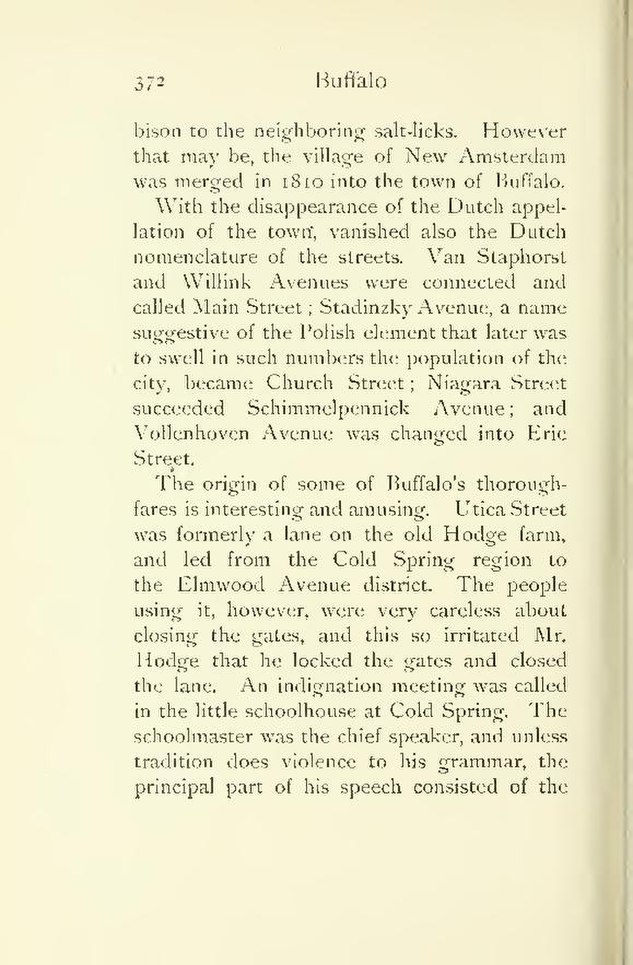bison to the neighboring salt-licks. However that may be, the village of New Amsterdam was merged in 1810 into the town of Buffalo.
With the disappearance of the Dutch appellation of the town, vanished also the Dutch nomenclature of the streets. Van Staphorst and Willink Avenues were connected and called Main Street; Stadinzky Avenue, a name suggestive of the Polish element that later was to swell in such numbers the population of the city, became Church Street; Niagara Street succeeded Schimmelpennick Avenue; and Vollenhoven Avenue was changed into Erie Street.
The origin of some of Buffalo's thoroughfares is interesting and amusing. Utica Street was formerly a lane on the old Hodge farm, and led from the Cold Spring region to the Elmwood Avenue district. The people using it, however, were very careless about closing the gates, and this so irritated Mr. Hodge that he locked the gates and closed the lane. An indignation meeting was called in the little schoolhouse at Cold Spring. The schoolmaster was the chief speaker, and unless tradition does violence to his grammar, the principal part of his speech consisted of the
